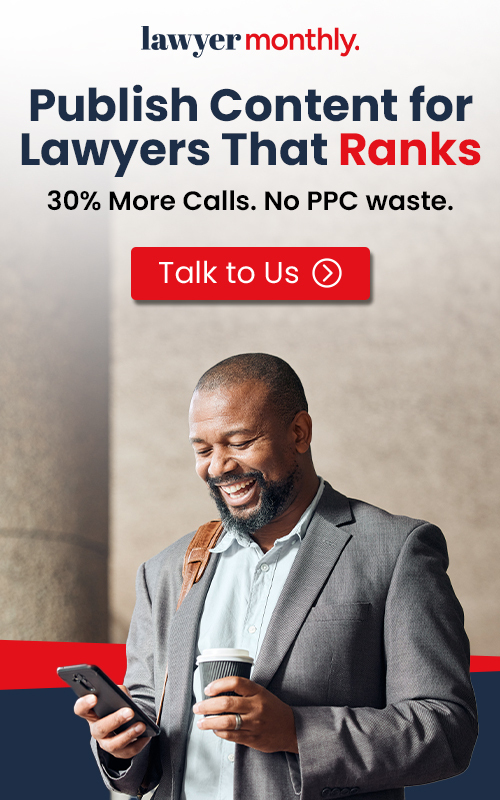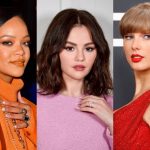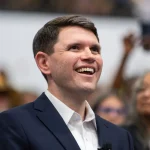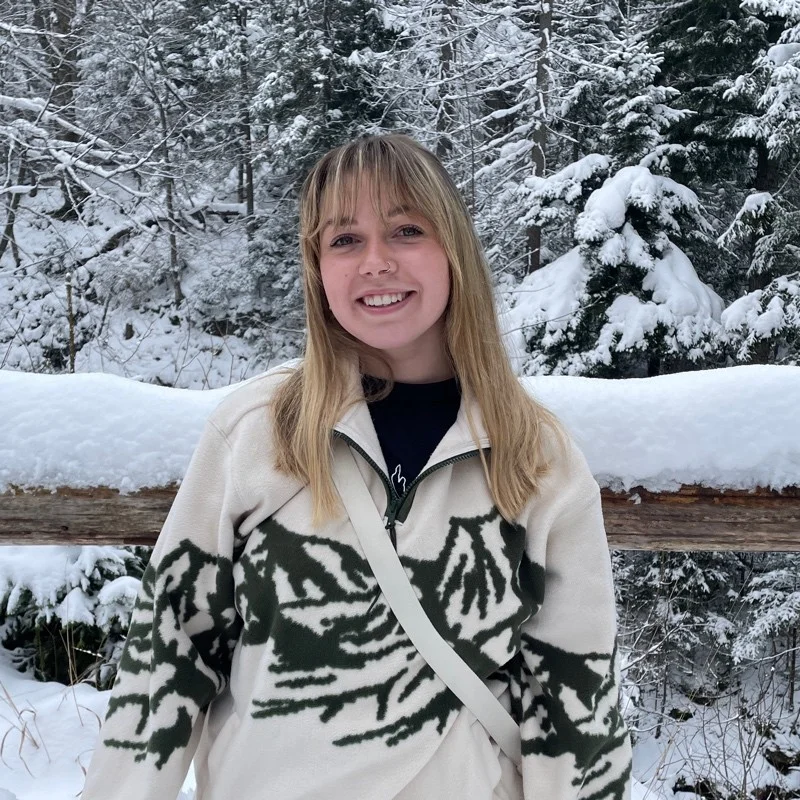Interview with Monica Ravichandran
CEO Today spoke exclusively with Monica Ravichandran, the beauty creator and former software engineer behind the viral “lipstick colour theory” hashtag on TikTok. Known for her expertise in colour theory, Monica has built a devoted online community – amassing 2.2 million followers across all her social media accounts – by solving a problem many of her followers had: finding makeup that truly complements their skin tone. Now, she's channeling that same passion into launching her first red lipstick with MOB Beauty, a shade she designed for her own wedding day to honor cultural and family traditions and finally wear the perfect red for her complexion. In this interview, Monica shares her journey from tech to beauty, the science behind her success, and how community, creativity, and problem-solving have shaped her career.
1. Monica, can you start by telling us more about your career in software engineering, was this always your career goal?
I’m always thinking of the higher picture and making sure I have the stepping stones to get to my goal. I studied Computer Science at California Polytechnic State University, San Luis Obispo, a top engineering school in California. I pursued this degree for two main reasons - the first was for the mindset. Having a degree in computer science enables you to develop a solid problem-solving mindset, which to me is a really transferable skill that you can use to apply to everything. The second reason was, I was aiming for a job as a product manager, someone who drives and develops the road map for engineers, thinking about the end result for the product.
Around the time I graduated college was when COVID hit, so of course, this was a struggle especially as my dad was high risk. My study year abroad to Paris had been cancelled but I had secured a job with Twilio. The start date for this was a few months later so I was bored, unable to do anything so began posting on social media for fun.
2. Did you ever think you would become a beauty influencer when you were working as a software engineer, how did you make the decision to become a full-time creator?
I was always the designated make-up artist among my girlfriends whenever we would go out, and on trips and they actually asked me if I would ever post content as a beauty creator. At the time I said no but we joked about what each of us would post if we started accounts, not actually thinking it would happen. But, as I said, when COVID hit, I thought I’d give it a go. When I started it was just Instagram and TikTok and both accounts started gaining a solid amount of success. By October time, TikTok had around 100k followers, so I was thinking, this is pretty cool! I did still enjoy my job as a Software Engineer, everyone assumes I quit because I hated it but I liked my job. I was working on the fraud intelligence team at Twilio, so I helped with their machine learning algorithms, my job title was Data Engineer.
I stayed with Twilio for around two years before I decided that I wanted to either see if I could pursue content creation full time or, my goal was to get into product management. This was a pivotal point in my career. I never thought I would be a full time Content creator. At this time content creation was still a hobby for me. I was interviewing as a product manager for influencer marketing agencies for influence marketing agencies because I wanted to learn what goes on behind the scenes. I was a creator myself which I felt gave me a bit of an edge because I knew what the creator would want. I ended up getting a job with ShopStyle (later rebranded to Collective Voice). I helped build their entire influencer campaigns dashboard and other processes as well. During my time in this role is when my video for color theory took off, I had been doing my series of brown girl makeup at this point too which helped me build a really strong community. I remember seeing on Google Trends the day that I posted my video, the rise of color theory. The concept is so simple, but the message is so important, and not everything is about going viral.
From there I was able to use that problem solving mindset into my content, because I’m not the best make-up artist and I’m not the best engineer, but what I am is a problem solver. My color theory video gained so much traction because it put forward a solution, understanding brown and black girl make-up. Not only did I gain more followers, but also a strong community. I also began feeling so fulfilled by the content creation now too, because I was filling a gap for people and I was becoming known for my color theory content, it’s become my branding.
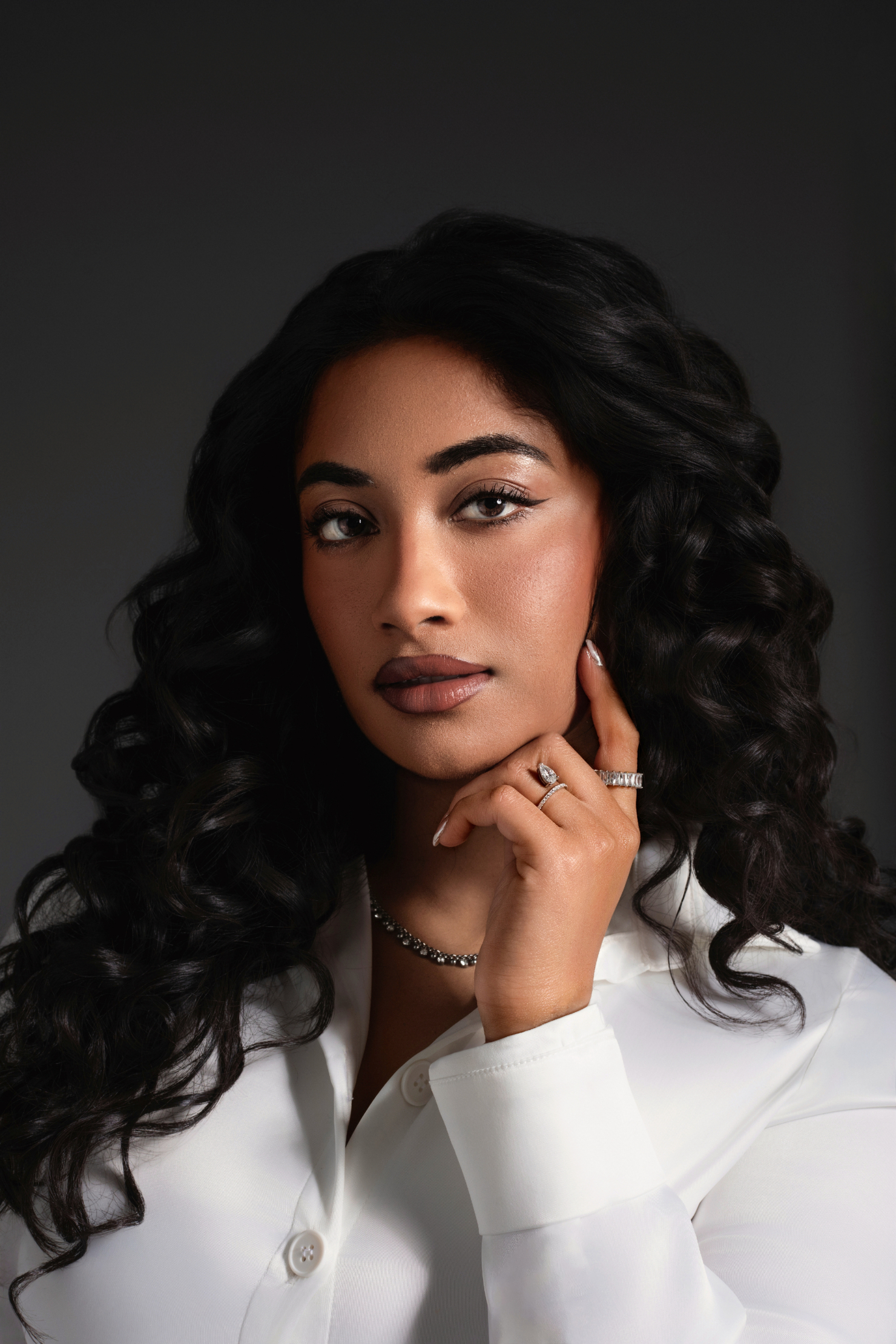
Monica Ravicandran
3. How did your family feel about your career taking off in content creation, where did your work ethic and creative mind come from?
My parents were supportive of it as a hobby to begin with, they have always been supportive of me having hobbies because they feel like me being a well-rounded person is really important. I had a ton of hobbies growing up because of this. My dad actually bought me my first ever vanity! I honestly have him to thank, I was even creating content out of his house to begin with, and he was the person who told me to download TikTok because he had been using it to find recipes.
When content creation became a center focus, they were skeptical because like me, they are quite risk adverse. As immigrant parents they do not enjoy taking risks, which is a mindset I have taken on too, which has its pros and cons. Now, my parents are supportive, you can see them in a lot of my content too. I do a lot of color theory videos with my dad because he has deep skin, and I began to really understand color theory because of my parents. My Mom has fair skin, my dad has really deep skin and I’m in the middle so the same product will never look the same on all three of us.
4. As someone in the creator industry, what would you say is the trajectory for those in it and is there a ticking clock on it as a career?
From a marketing perspective, it’s not going anywhere. I think it’s the creators who are an expert in their niche who are going to have a career for a long time. In my opinion it’s just going to become more refined, but in a good way. I feel that consumers now are recognizing who is
really there for their community and those who are just doing stuff to go viral and to make money.
Creators who may have gained quick popularity in the beginning of TikTok are now not as relevant, but I am still slowly building my community. I think it’s because I'm trying to run a marathon not a race. I would rather slowly creep up and turn each person who finds my page into a loyal community member instead of just watching my content for the virality of things. I am building my social media to be a long-lasting brand and something I can take into different avenues later on too.
5. How do you blend your intelligent, problem solving brain with the very creative side of you, do you find you can bring all of your skills into your current career in content creation and how did you scale this into a successful business?
I think that is the beauty of what I do, I get to define my own path. Being a creator is what you make of it because you get to decide what you do. I have hired two employers, so when I made my first 6 figures I didn’t go out and buy anything flashy, I did as much as I could to reinvest it into my business. I’ve been investing into EFTs since I was 18, so I've always been thinking about the long-term picture. I hired an assistant and then a social media marketing assistant. We run analytics reports every month to compare how the content performs. I also use my comments section for ideas, it’s the community who are telling you what they want to see, for free!
We have also built a project management system to track all the content live, everything is organized so that way I can focus on the creative aspect. I feel like creators are often scared to let go of their power over their business, but nothing gets posted without me approving it, it’s a system.
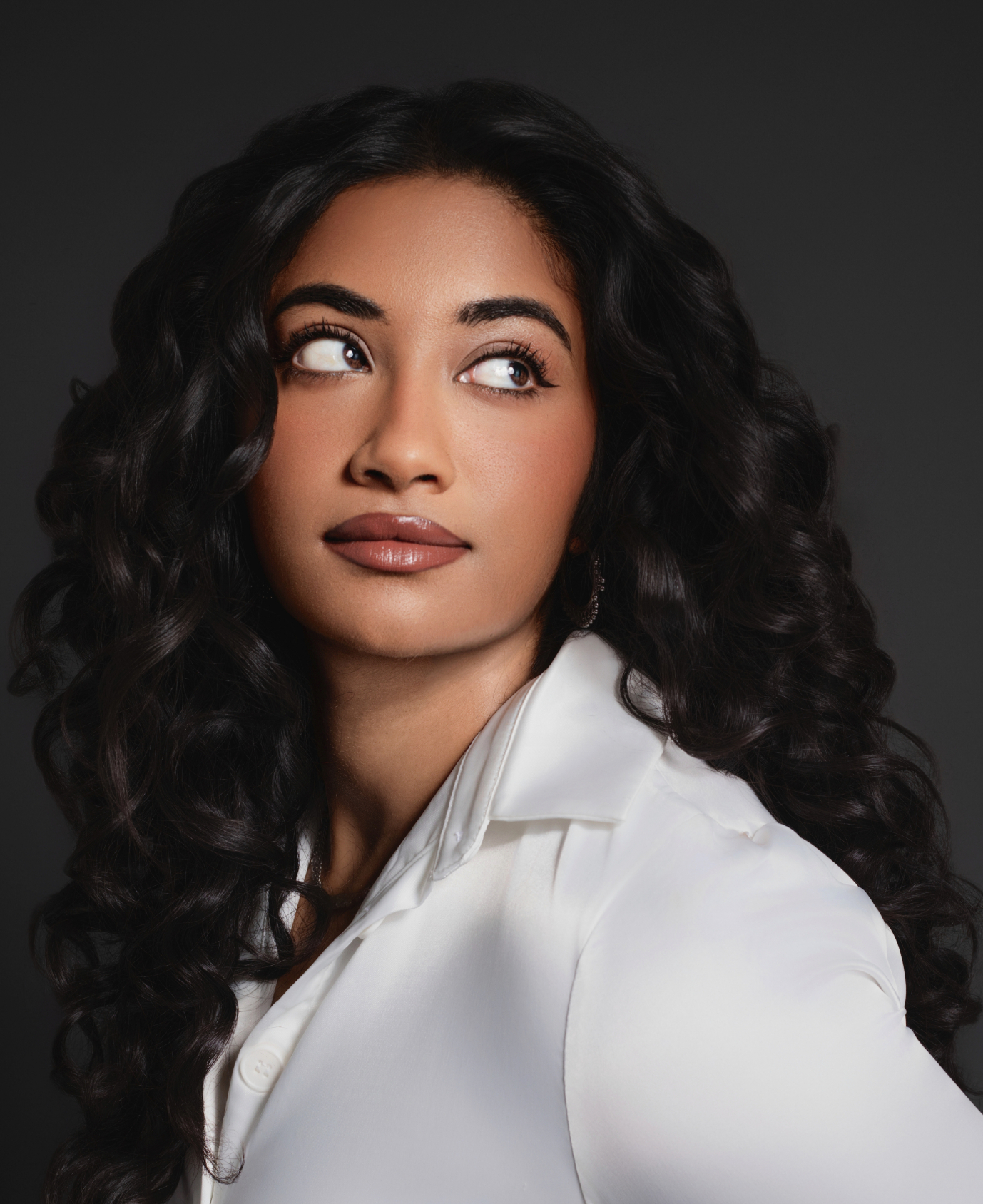
Monica Ravichandran
6. You have a successful series on your social media, your honest product reviews, how do you stick to your values without damaging any relationships with brands?
I’m community first. I do think brands understand that you can’t like every product, there are some brands that I will never work with, brands that I like but some of their products have not been great, but my goal is to be honest with myself and the audience.
“Monica’s no BS reviews” started as a way to show the pros and cons of a product and then end with a no BS rating. I also make sure the rating isn’t just down to how well it worked for me but how it’s marketed and how well it would work for the general consumer. The way I think about it is that if it wouldn’t work for me, and my dad, who has darker skin, then it’s getting a lower rating. If a brand markets a product as universal but only has a very limited shade range, then that’s a bad sign. I’m community centric rather than brand centric and I think brands come when you are loyal and passionate. I’m just trying to have the longest career I can, not to be the trendiest person or the most viral creator.
A couple of my No-No brands:
Charlotte Tilbury - lack of inclusivity and over-exaggerated marketing tactics. YSL and Dior- High price point for low quality products.
7. How did the opportunity arise to create your own shade of red lipstick, to work in the labs and collaborate with MOB beauty?
When I was growing up, my mom was always wearing a red lip, that’s her signature look. It was the MAC Russian Red. That’s been a sore point for me because I would try her red lipstick and look like a clown, this was my first understanding of color theory. I also think red lipstick is a strong part of my culture, my mom would wear it to Indian functions, her job, my mom and my grandma both wore a red lip to their weddings too. Red Lipstick is a tradition I really want to continue, but with a modern take that suits me.
I started a series when MAC sent me their new formulated lipstick shades, one of them being Ruby Woo which I had never tried before. When I tried it, this almost triggered me, because yet again, it was a red lip that made me feel like a clown.
Brands often market red lipstick as universal but don’t take into account nuance at all! In this series I was trying so many lipsticks on the hunt for my perfect shade. I probably own around 50 red lipsticks just in the same shades of Ruby Woo and Russian Red because they are used as benchmarks for other brands too. MOB Beauty invited me to the lab, at first just for fun, and I made a bunch of random items, one was a purple blush. Then when they invited me back again, I went with intention. I wanted a lipstick which would be perfect for my skin tone for my wedding but also one that would be great for everyone in my comments saying they struggled with the same problem.
We made a custom shade, completely from scratch which I’m really proud of. When I was making the series, I had so many comments claiming that I just don’t like red lipstick or that I should just fix it with brown lip liner, but I shouldn’t have to do that, it’s 2025!
8. What was it like working with MOB beauty, did you have support to create something that you never saw growing up, make-up designed for your skin tone?
What I really like about MOB Beauty and the CEO, Vic, is that they really care. There’s no other brand that will invite me to their lab and go through 30 iterations of a shade, really involving me in the entire process. I always told myself that if I did any collaborations, I would need to know exactly what was going on. MOB beauty is also vegan, cruelty free, they don’t use any plastics, just a really sustainable brand.
9. What was the biggest thing you learned during your time at the labs?
When it comes to pigments you have to add really small amounts to get to the perfect shade. That’s why it’s easier to benchmark because it’s really hard to scale that up from the lab to the manufacturer. So, if you had 5g of red iron oxide and 2g of green chromium oxide, that ratio cannot be tripled or quadrupled, you have to adjust them to get it right. It’s a long process and it takes a lot of trial and error.
10. . What do you envision for your future, will you go down the product development route or create your own brand, what can we expect to see?
I think the only downside of this career is that there’s no definite path. When you are an engineer, you have options, and you work your way up the ladder until you retire. Now I can decide my own path, there's a couple different options I could decide on. One is to be a brand founder, either makeup brands or it’ll be a technology company. I have a great idea for a brand, the industry is so saturated with influencer brands, and honestly, it’s nothing new. I think this idea would align with my own branding on color theory as well as filling a gap in the industry, which are always my top goals.
I’m hoping to use the sales data from my red lipstick launch so I can understand the minimum order quantity. So, this is something I am hoping to work on at the end of this year
Related: CEO Today Interviews Ravi Sabharwal, Co-Founder & Owner of Oliver’s Travels



